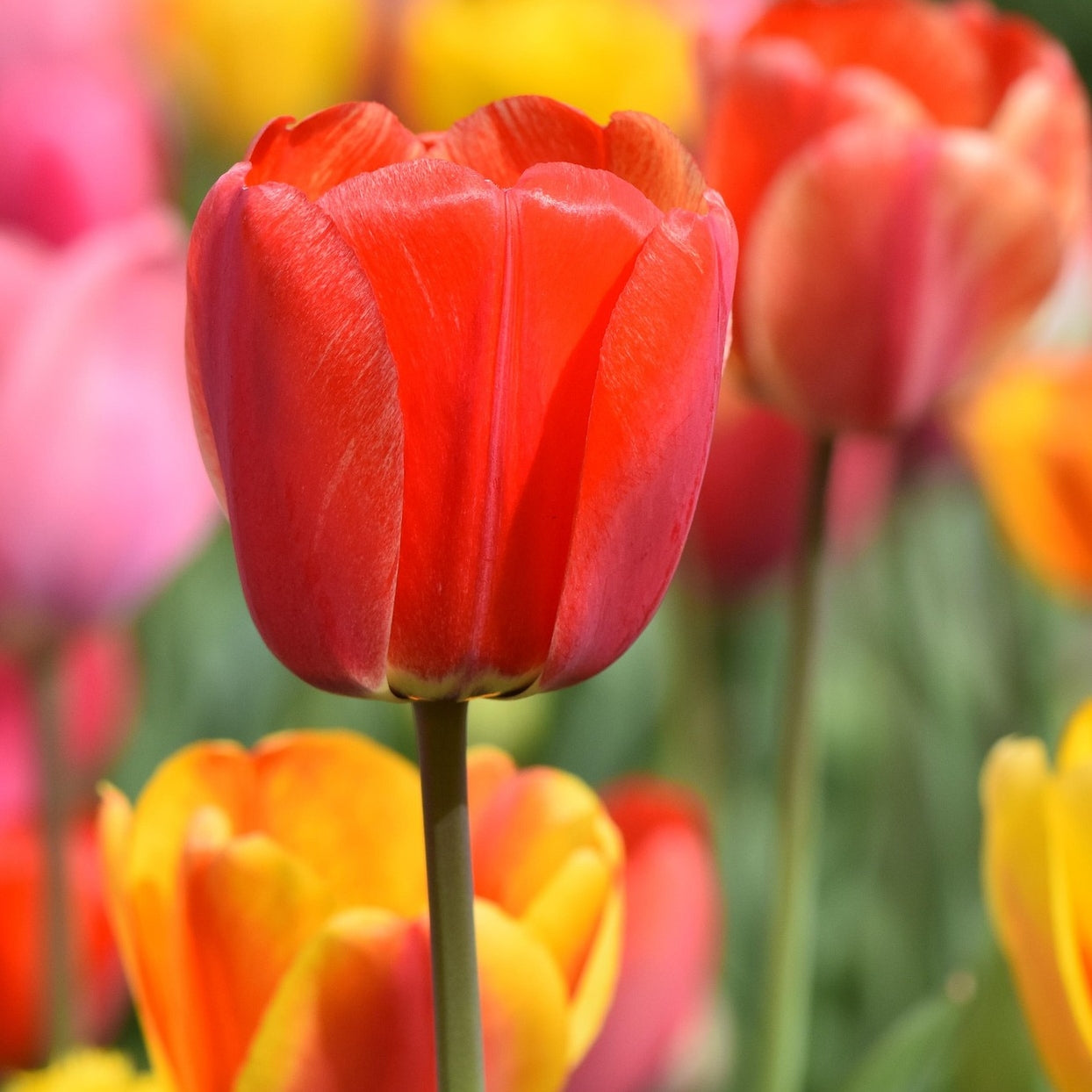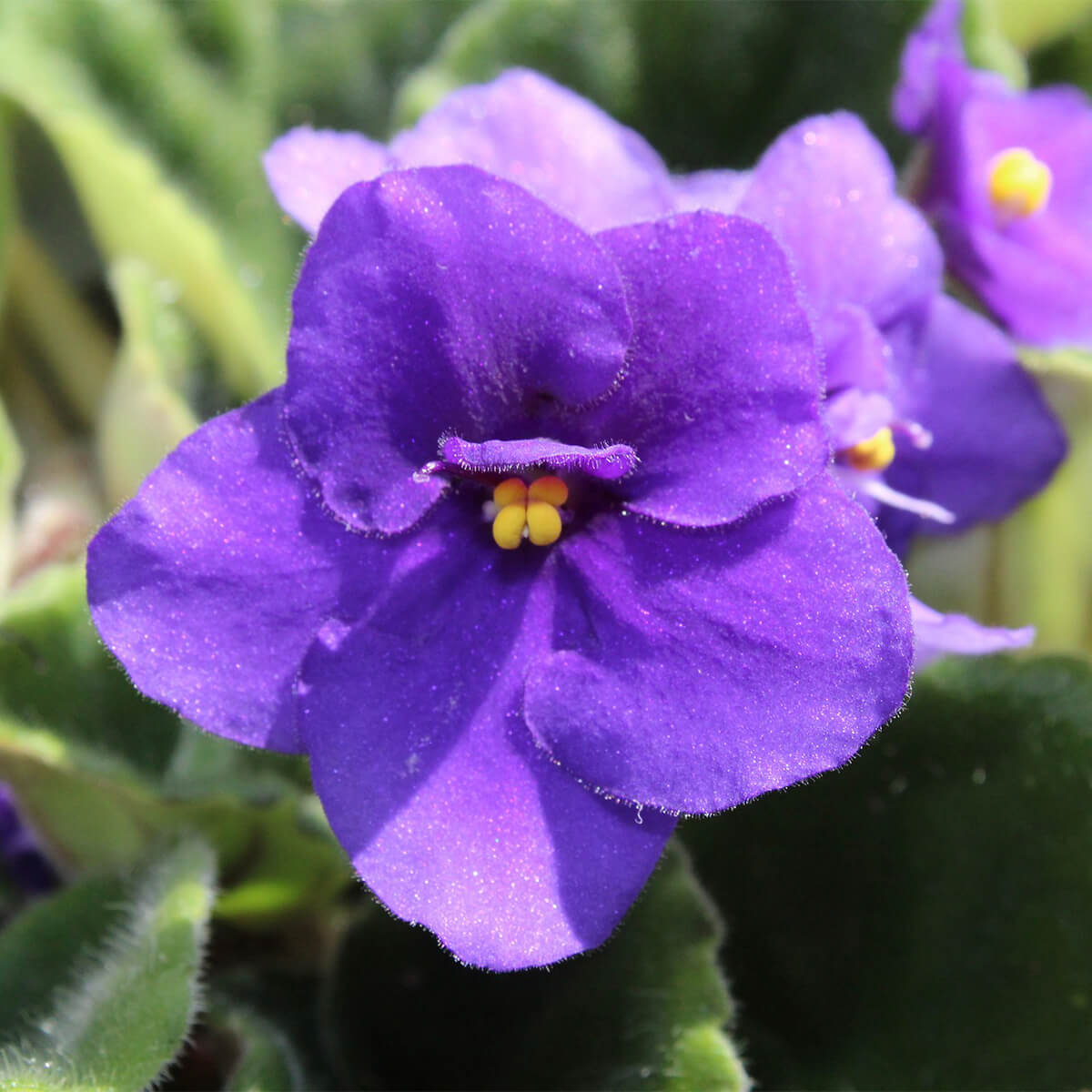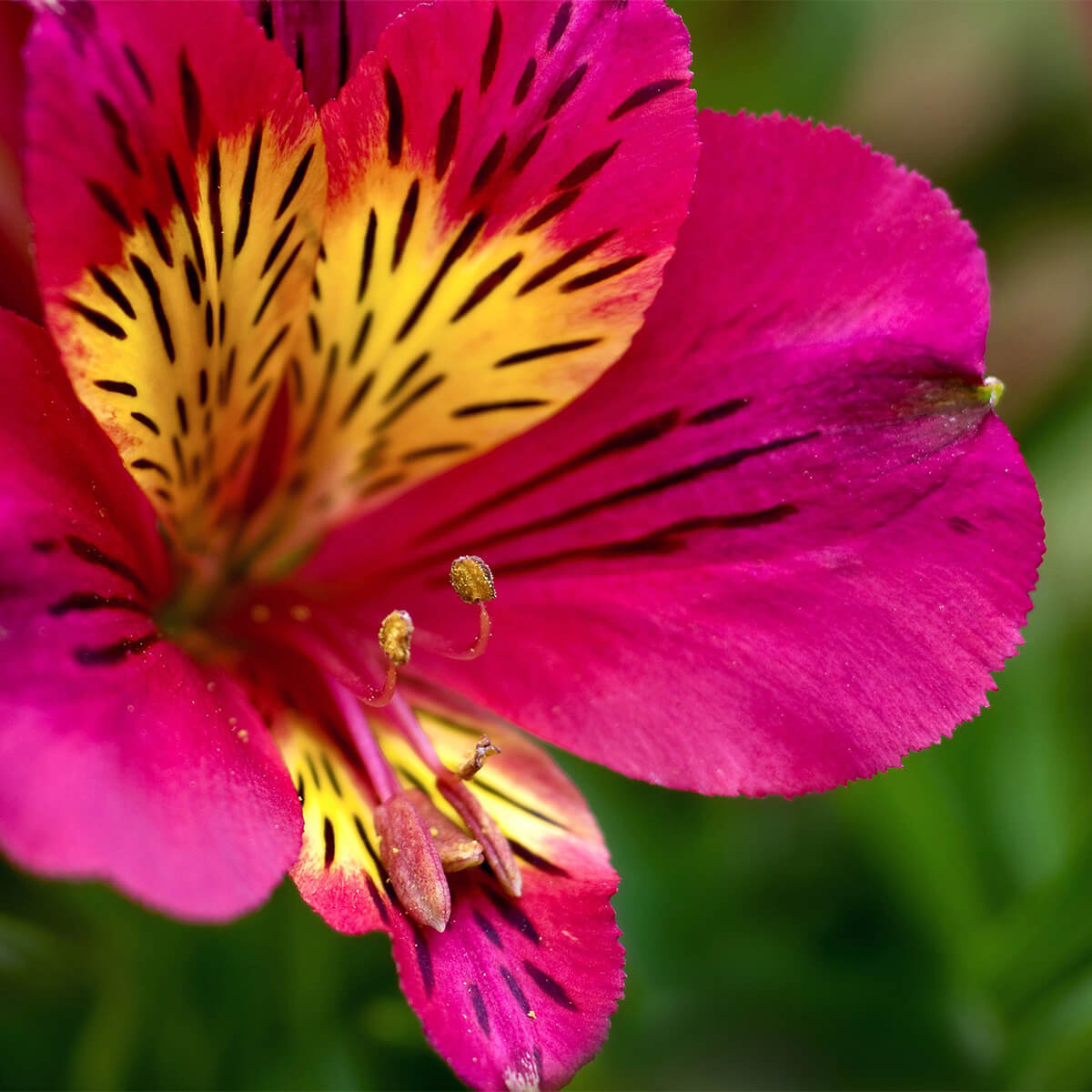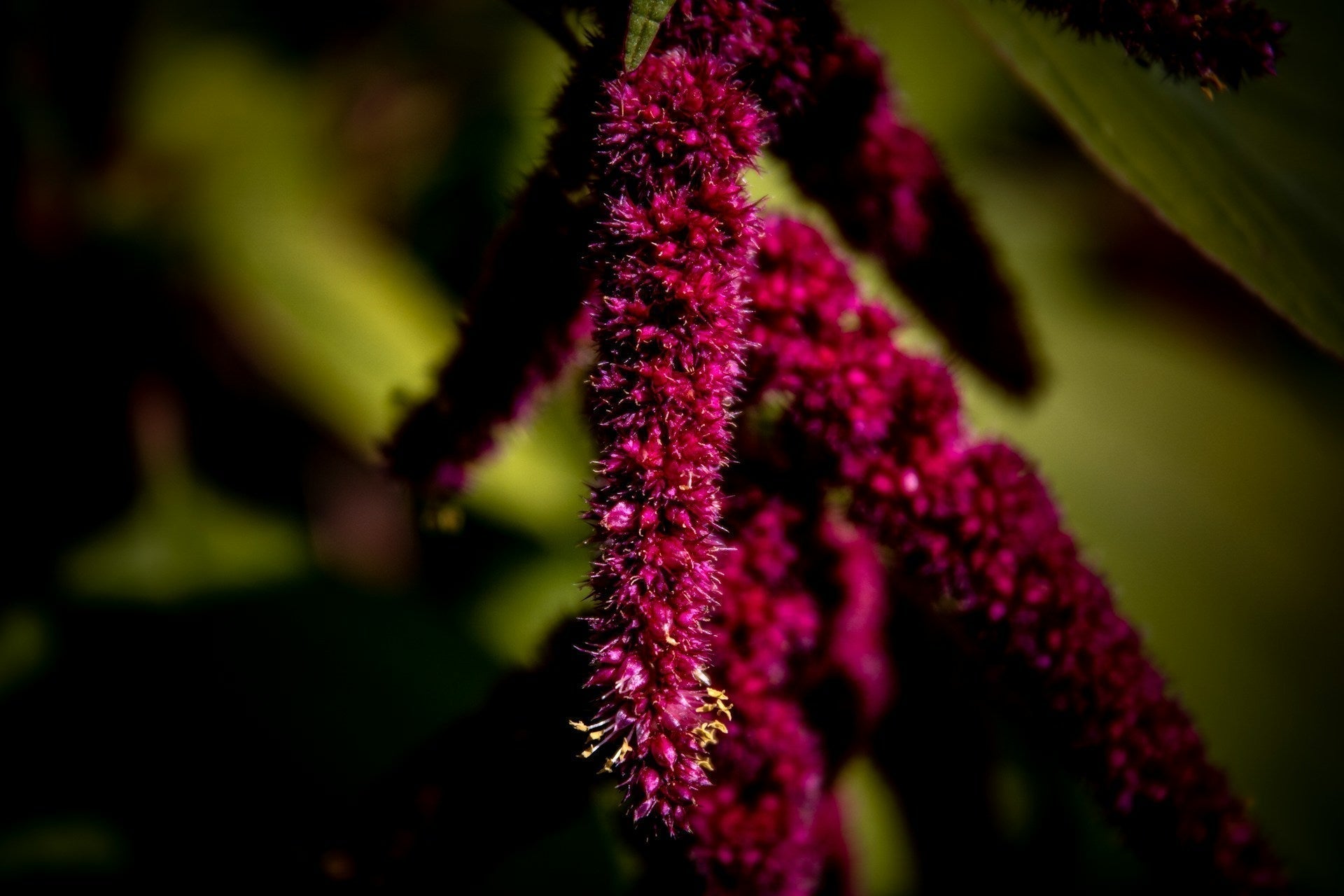Tulip – Tulipa
Symbolism: Tulips symbolize perfect love, deep love, and rebirth, with associations to Turkish and Persian legends of Farhad and Shirin. During Victorian times, tulips were also linked to charity.
Description: Tulips exhibit various shapes and come in almost every colour, except true blue. Shapes include cup, teardrop, bowl, goblet, and star, with some flowers being double. Each tulip has six petal-like tepals.
Tulips were first cultivated in Persia, where the bulbs grew spontaneously, some thousand years ago.
Named after: The name tulip originates from the Turkish word tulban or "turban," possibly due to the similarity between the flower's shape and the traditional oriental hairstyle.
Latin/Scientific name: Tulipa
Native to: Central Asia and Turkey
Flowering period: January to late spring
Vase life: 5 to 12 days in a vase when given regular water top-ups, as they are heavy drinkers
Popular use in floral arrangements or bouquets: Tulips are often featured in spring-themed arrangements and creatively used in various settings such as wedding receptions. We love to feature Tulips in any spring-themed arrangements. We even hung them from the ceiling for a wedding reception!
When in stock in our shops: January to late spring. Sign up for our Tulip alert email list and we'll let you know as soon as they have arrived in our stores.
Potted Plant Care
Light
- Place your potted tulip plant in a location that receives bright, indirect sunlight.
- Avoid direct sunlight as it can cause the flowers to wilt.
Soil
- Use a well-draining potting mix that contains perlite or sand to ensure proper drainage.
- Tulip plants prefer slightly acidic soil with a pH between 6.0 and 7.0.
Water
- Water your tulip plant when the top inch of soil feels dry to the touch.
- Water the plant thoroughly and allow excess water to drain out of the pot.
- Avoid over watering as it can cause root rot.
Temperature & Humidity
- Tulip plants prefer cool temperatures (50-60°F, 10-15°C).
- They do not require high humidity levels.
Feeding
- Fertilize your tulip plant every 2-3 weeks with a balanced, water-soluble fertilizer during the growing season (spring and summer).
- Avoid fertilizing during the winter months when the plant is dormant.
Transitioning Indoors to Outdoors
- Tulip plants are typically grown outdoors in the ground, but they can also be grown in containers indoors.
- If you decide to transition your tulip plant from indoors to outdoors, do so gradually to avoid shock.
- Start by placing the plant in a shaded outdoor area for a few hours a day and gradually increase the exposure to sunlight over time.
- Ensure the outdoor soil is well-draining to prevent waterlogged conditions.
Storing tulip bulbs for planting in the fall
After the tulip blooms have died, the plant starts storing energy in the bulbs for next year's growth.
Here’s how to store tulip bulbs:
- Wait until the foliage has completely yellowed and died back naturally.
- Carefully dig up the bulbs, being careful not to damage them.
- Gently shake off any excess soil and remove any remaining foliage.
- Allow the bulbs to dry for a few days in a well-ventilated area.
- Once dry, remove any remaining debris or loose scales.
- Store the bulbs in a cool, dry, and dark place such as a paper bag or cardboard box.
- It's essential to store the bulbs at a cool temperature (35-50°F, 2-10°C) to keep them dormant and prevent them from sprouting prematurely.
- Avoid storing the bulbs in plastic bags as they can trap moisture and cause the bulbs to rot.
- Check the bulbs periodically during storage to ensure they are not drying out or showing signs of rot.
- Plant the bulbs in the fall before the ground freezes, so they have time to establish roots before winter.







